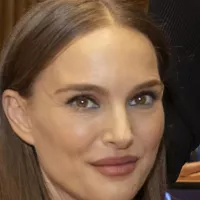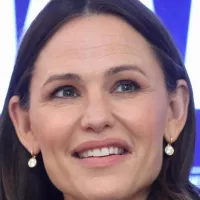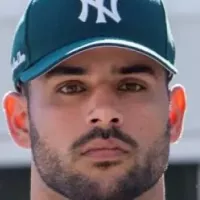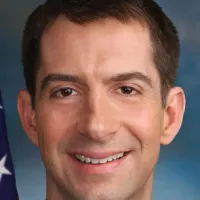Bayer AG is a German multinational pharmaceutical and biotechnology company headquartered in Leverkusen. It ranks among the world's largest pharmaceutical and biomedical companies. Bayer's business segments encompass pharmaceuticals, consumer healthcare products, agricultural chemicals, seeds, and biotechnology products. The company is listed on the EURO STOXX 50 stock market index.
1903: Licensing of Diethylbarbituric Acid
In 1903, Bayer licensed the patent for the hypnotic drug diethylbarbituric acid from its inventors Emil Fischer and Joseph von Mering.
1904: Veronal Marketed as Sleep Aid
In 1904, Bayer marketed diethylbarbituric acid under the trade name Veronal as a sleep aid.
1904: Bayer Cross Trademark
In 1904, Bayer received a trademark for the "Bayer Cross" logo, which was stamped onto each Aspirin tablet, creating an iconic product.
1904: Founding of sports club TuS 04
In 1904, the company founded the sports club TuS 04, later known as TSV Bayer 04 Leverkusen, which participates in various sports.
1910: End of Heroin Marketing
Bayer trademarked and marketed Heroin from 1898 to 1910 as a cough suppressant and over-the-counter treatment, but its marketing ended in 1910.
1911: Discovery of Phenobarbital
In 1911, systematic investigations at Bayer led to the discovery of phenobarbital.
1912: Discovery of Phenobarbital's Anti-Epileptic Activity
In 1912, Bayer discovered the potent anti-epileptic activity of phenobarbital.
1914: Confiscation of Assets
During World War I, in 1914, Bayer's assets, including the rights to its name and trademarks, were confiscated in the United States, Canada, and several other countries.
1914: Production of Chemical Weapons
In 1914, Bayer manufactured dianisidine chlorosulfate for use in artillery shells as a lung irritant during World War I.
1916: Discovery of Suramin
In 1916, Bayer scientists discovered suramin, an anti-parasite drug that is still sold by Bayer under the brand name Germanin.
1918: Confiscation of Assets
During World War I, by 1918, Bayer's assets, including the rights to its name and trademarks, were confiscated in the United States, Canada, and several other countries.
1920: Death of Friedrich Bayer (son)
In 1920, Friedrich Bayer (1851–1920), the son of the company's founder, passed away. He had joined the company in 1873.
1924: Elucidation of Suramin Formula
In 1924, Ernest Fourneau and his team at the Pasteur Institute elucidated and published the formula of suramin, which Bayer had kept secret for commercial reasons.
1925: Merger to form IG Farben
In 1925, Bayer merged with five other German companies to form IG Farben, creating the world's largest chemical and pharmaceutical company.
1930: Foundation of Leverkusen
In 1930, a new city, Leverkusen, was founded and became home to Bayer AG's headquarters.
1932: Discovery of Prontosil
In 1932, a research team led by Gerhard Domagk at the Bayer Laboratories developed Prontosil, the first sulfonamide and the first systemically active antibacterial drug, a forerunner of antibiotics.
1933: Discovery of Prontosil
In 1933, a research team led by Gerhard Domagk at the Bayer Laboratories developed Prontosil, the first sulfonamide and the first systemically active antibacterial drug, a forerunner of antibiotics.
1935: Nobel Peace Prize to Carl von Ossietzky
In 1935, the Nobel committee awarded the Nobel Peace Prize to a German pacifist, Carl von Ossietzky, leading to a ban on German citizens accepting Nobel prizes.
1939: Domagk Wins Nobel Prize
In 1939, Gerhard Domagk won the Nobel Prize in Physiology or Medicine for the discovery of the antibacterial effects of Prontosil. However, he was forced by the Nazi Party to relinquish the reward.
1943: Use of Slave Labor
By 1943, almost half of IG Farben's 330,000-strong workforce consisted of slave labor or conscripts, including 30,000 Auschwitz prisoners.
1950: Release of Fritz ter Meer
In 1950, Fritz ter Meer, who was sentenced to seven years for his role in planning the Monowitz camp and IG Farben's Buna Werke factory at Auschwitz, was released.
1951: Reincorporation of Bayer
In 1951, following World War II, IG Farben was split into its constituent companies, and Bayer was reincorporated as Farbenfabriken Bayer AG.
1953: Introduction of Chlorpromazine
In 1953, Bayer brought the first neuroleptic (chlorpromazine) onto the German market.
1956: Ter Meer as Chairman
In 1956, Fritz ter Meer, a convicted Nazi war criminal, was elected as chairman of Bayer AG's supervisory board.
1964: Ter Meer Steps Down
In 1964, Fritz ter Meer stepped down as chairman of Bayer AG's supervisory board.
1972: Name Change to Bayer AG
In 1972, Farbenfabriken Bayer AG changed its name to Bayer AG.
1978: Acquisition of Miles Laboratories
In 1978, Bayer purchased Miles Laboratories and its subsidiaries, acquiring product lines including Alka-Seltzer, Flintstones vitamins, One-A-Day vitamins, and Cutter insect repellent.
1978: End of PCB contamination period in lawsuits
In June 2020, Bayer agreed to pay $800 million to settle lawsuits claiming contamination of public waterways with PCBs by Monsanto before 1978.
1983: Contaminated Blood Products Identified
By 1983, the CDC had identified contaminated blood products as a source of AIDS infection, particularly affecting people with hemophilia.
1984: Sports club renamed TSV Bayer 04 Leverkusen
In 1984, the sports club was finally renamed TSV Bayer 04 Leverkusen.
1984: Introduction of Heat-Treated Blood Products
In early 1984, companies including Bayer introduced new ways to treat donated blood with heat to decontaminate it.
1985: Continued Sale of Untreated Blood Products
In 1985, Cutter continued to sell unheated blood products in markets outside the US.
1994: Reclaiming Trademark Rights
In 1994, Bayer AG purchased Sterling Winthrop's over-the-counter (OTC) drug business from SmithKline Beecham and merged it with Miles Laboratories, reclaiming the U.S. and Canadian trademark rights to "Bayer" and the Bayer cross, as well as ownership of the Aspirin trademark in Canada.
1994: Reclamation of Assets
In 1994, Bayer reclaimed its assets and trademarks in the United States and Canada, including the Bayer cross.
1995: Public Apology by Bayer
In 1995, Helge Wehmeier, then CEO of Bayer, offered a public apology to Elie Wiesel for the company's actions during World War II and the Holocaust.
1997: Settlement for Hemophiliacs
In 1997, Bayer and three other makers of blood products agreed to pay $660 million to settle cases on behalf of more than 6,000 hemophiliacs infected in the United States.
2001: Discontinuation of Baycol
In 2001, Bayer discontinued the statin drug Baycol (cerivastatin) after 52 deaths were attributed to it.
2002: Acquisition of Aventis CropScience and Nunhems
In 2002, Bayer AG acquired Aventis CropScience and fused it with their own agrochemicals division to form Bayer CropScience. Also in 2002, Bayer AG acquired the Dutch seed company Nunhems.
2003: Reorganization into a holding company
In 2003, Bayer AG was reorganized into a holding company to separate operational and strategic managements.
2003: Continued Sale of Untreated Blood Products
In 2003, documents emerged showing that Cutter continued to sell unheated blood products in markets outside the US until 1985.
July 2004: Formation of Lanxess
Bayer Chemicals AG (with the exception of H.C. Starck and Wolff Walsrode) was combined with certain components of the polymers segment to form the new company Lanxess on 1 July 2004.
2004: Divestment of Chemicals division
By divesting its Chemicals division in 2004, Bayer aimed to transition into a life sciences based company.
2004: Acquisition of Roche's over-the-counter pharmaceutical division
In 2004, Bayer HealthCare acquired the over-the-counter pharmaceutical division of Roche.
2005: Lanxess listed on Frankfurt Stock Exchange
Lanxess was listed on the Frankfurt Stock Exchange in early 2005.
March 2006: Merck KGaA bid for Schering AG
In March 2006, Merck KGaA announced a €14.6 billion bid for Schering AG.
2006: Contamination of U.S. rice supply with LibertyLink genetically modified rice
In 2006, the U.S. Department of Agriculture announced that Bayer CropScience's LibertyLink genetically modified rice had contaminated the U.S. rice supply, leading to import bans and price plunges.
January 2007: Acquisition of Bayer HealthCare's Diagnostics Division by Siemens
In January 2007, Bayer HealthCare's Diagnostics Division was acquired by Siemens Medical Solutions.
2007: Bayer takeover of Schering AG and formation of Bayer Schering Pharma
In 2007, Bayer took over Schering AG and formed Bayer Schering Pharma after acquiring the majority of Schering's shares for €14.6 billion.
2007: Withdrawal of Trasylol
In 2007, Trasylol (aprotinin) was withdrawn from the market worldwide due to reports of increased mortality.
March 2008: Agreement to acquire Sagmel, Inc.
In March 2008, Bayer HealthCare announced an agreement to acquire the portfolio and OTC division of Sagmel, Inc., a US-based company marketing OTC medications in the Commonwealth of Independent States countries.
August 2008: Explosion at Bayer CropScience facility
On 28 August 2008, an explosion occurred at the Bayer CropScience facility in Institute, West Virginia, resulting in two employee deaths due to a runaway reaction that ruptured a tank.
October 2008: Bayer Canada named one of "Canada's Top 100 Employers"
In October 2008, Bayer's Canadian division was named one of "Canada's Top 100 Employers" by Mediacorp Canada Inc.
April 2010: Jury award to farmers for rice contamination
In April 2010, a Lonoke County, Arkansas jury awarded a dozen farmers $48 million due to the contamination caused by genetically modified rice.
November 2010: Agreement to buy Bomac Group
In November 2010, Bayer AG signed an agreement to buy Auckland-based animal health company Bomac Group.
July 2011: Global settlement for rice contamination
On 1 July 2011, Bayer CropScience agreed to a global settlement for up to $750 million related to the genetically modified rice contamination.
December 2011: Health Canada updates information on increased risk of blood clots for Yasmin and Yaz
On 5 December 2011, Health Canada issued updated information regarding the increased risk of blood clots associated with the use of Yasmin and Yaz (drospirenone).
2011: Aspirin production and consumption
As of 2011, approximately 40,000 tons of aspirin were produced each year, with 10–20 billion tablets consumed in the United States alone for prevention of cardiovascular events.
2011: Bayer USA's Corporate Equality Index score
In 2011, Bayer USA was given a score of 85 out of 100 in the Human Rights Campaign's Corporate Equality Index.
2013: Investment plans in the United States
In September 2014, Bayer CropScience announced plans to invest $1 billion in the United States between 2013 and 2016, with the largest investments made to expand the production of Liberty herbicide.
May 2014: Bayer to buy Merck & Co's consumer health unit
In May 2014, it was announced that Bayer would buy Merck & Co's consumer health care unit for $14.2 billion.
September 2014: Investment plans in the United States
In September 2014, Bayer CropScience announced plans to invest $1 billion in the United States between 2013 and 2016, with the largest investments made to expand the production of Liberty herbicide.
September 2014: Announcement of plans to float Bayer MaterialScience
On 18 September 2014, the Board of Directors of Bayer AG announced plans to float the Bayer MaterialScience business on the stock market as a separate entity.
2014: Phenobarbital on WHO List
As of 2014, Phenobarbital remains on the World Health Organization's list of essential medications.
2014: Acquisition of Algeta and Merck's consumer health business
In 2014, Bayer moved to acquire Algeta for about $2.9 billion. Also in 2014, Bayer agreed to buy Merck's consumer health business for $14.2 billion gaining brands like Claritin, Coppertone, and Dr. Scholl's.
2014: Review of Primodos
In 2014, a review by the Medicines and Healthcare products Regulatory Agency assessed studies on Primodos and found the evidence for adverse effects to be inconclusive.
2014: Pharmaceutical Revenue
In 2014, pharmaceutical products contributed €12.05 billion of Bayer's €40.15 billion in gross revenue.
2014: Bayer purchases Merck’s consumer care business
In April 2023, a Delaware judge dismissed a lawsuit by Merck & Co’s seeking to hold Bayer AG responsible for more talc-related liabilities stemming from its $14.2 billion purchase of Merck’s consumer care business in 2014.
June 2015: Agreement to sell diabetic care business to Panasonic
In June 2015, Bayer agreed to sell its diabetic care business to Panasonic Healthcare Holdings for $1.02 billion.
June 2015: Sale of diabetes business to Panasonic
The diabetes business unit was sold to Panasonic Healthcare Co. for $1.15 billion in June 2015.
September 2015: Spin-off of Covestro
Bayer formally spun out Covestro in September 2015.
September 2015: Spin out of materials science division into Covestro
In September 2015, Bayer spun out its materials science division into a separate, publicly traded company called Covestro, retaining about a 70% interest.
October 2015: Covestro shares first offered on Frankfurt Stock Exchange
In October 2015, Covestro shares were first offered on the Frankfurt Stock Exchange.
2015: Ranking of Schering acquisition
As of 2015, the acquisition of Schering was one of the ten biggest pharma mergers of all time.
2015: Start of Dicamba claims period
In June 2020, Bayer agreed to a settlement of up to $400 million for all 2015 to 2020 crop year dicamba claims, not including the $265 million judgement. 2015 is the first year of dicamba claims.
January 2016: Bayer rebrands as a life sciences company
Effective January 2016, following the spinout of Covestro, Bayer rebranded itself as a life sciences company and restructured into three divisions and one business unit.
May 2016: Bayer offers to buy Monsanto
In May 2016, Bayer offered to buy U.S. biotechnology company Monsanto for $62 billion.
September 2016: Monsanto agrees to Bayer's offer
In September 2016, Monsanto agreed to a $66 billion offer by Bayer.
2016: Ranked third in Access to Seeds Index
Bayer ranked third in the Access to Seeds Index in 2016.
2016: Bayer acquisition of Monsanto
Bayer's acquisition of Monsanto is the biggest acquisition by a German company to date.
2016: Restructuring of Bayer HealthCare
Before the 2016 restructuring, Bayer HealthCare comprised four subdivisions: Bayer Schering Pharma, Bayer Consumer Care, Bayer Animal Health and Bayer Medical Care. As part of the corporate restructuring, Animal Health was moved into its own business unit.
2016: Bayer CropScience becomes a major division of Bayer AG
In 2016, Bayer CropScience became one of the three major divisions of Bayer AG, reporting directly to Liam Condon.
2016: Merger with Monsanto
In 2016, Bayer merged with Monsanto, an American multinational corporation, in what was the biggest acquisition by a German company to date.
2016: Standard Ethics Aei rating
In 2016, Standard Ethics Aei gave Bayer an EE− rating to include the company in its Standard Ethics German Index.
2016: Second restructuring to transition to a life sciences company
In 2016, the company began a second restructuring with the aim of allowing it to transition to a life sciences based company.
2017: Bayer's fiscal year earnings
For the fiscal year 2017, Bayer reported earnings of EUR€7.3 billion, with an annual revenue of EUR€35 billion.
2017: Financial reporting without Covestro
From 2017 on, financial results were reported without Covestro.
2017: US District Court allows subclasses to act together in One A Day vitamin suit
In 2017, the US District Court in San Francisco said subclasses of purchasers of the One A Day vitamin in Florida, New York, and California could act together in the $600 million class action suit.
March 2018: EU approves Bayer's acquisition of Monsanto
On 21 March 2018, the European Union approved Bayer's acquisition of Monsanto.
May 2018: US approves Bayer's acquisition of Monsanto
On 20 May 2018, the United States approved Bayer's acquisition of Monsanto.
June 2018: Sale of Monsanto closes, products marketed under Bayer name
The sale of Monsanto to Bayer closed on 7 June 2018. The Monsanto brand was discontinued, and its products are now marketed under the Bayer name.
August 2018: Monsanto ordered to pay $289 million in Roundup cancer case
In August 2018, a U.S. jury ordered Monsanto to pay $289 million to a school groundskeeper who claimed his Non-Hodgkin's lymphoma was caused by regularly using Roundup. Following the Johnson v. Monsanto Co. verdict, Bayer's share price dropped by around 14%.
September 2018: Bayer appeals Roundup verdict
On 18 September 2018, Bayer filed an appeal following the Johnson v. Monsanto Co. verdict, where Monsanto was ordered to pay $289 million. Pending appeal, the award was later reduced to $78.5 million.
November 2018: Bayer's market capitalization
In November 2018, Bayer's market capitalization was valued at US€65.4 billion.
November 2018: Monsanto appeals Roundup judgement
In November 2018, Monsanto appealed the judgement in the Johnson v. Monsanto Co. case, asking an appellate court to consider a motion for a new trial. This followed an initial verdict ordering Monsanto to pay $289 million, later reduced to $78.5 million.
May 2019: Bayer ordered to pay $2.5 billion in damages in another Roundup case
On 13 May 2019, a United States Superior Court Judge ordered Bayer to pay more than $2.5 billion in damages to a couple in California, both of whom contracted non-Hodgkin's Lymphoma. The award was later cut to $87 million on appeal.
August 2019: Acquisition of BlueRock Therapeutics
In August 2019, Bayer acquired approximately 60% of BlueRock Therapeutics, a company it didn't already own, for up to $600 million.
September 2019: Reduction of management board members
In September 2019, Bayer announced it would reduce the number of management board members from seven to five to reduce overall costs.
September 2019: Bayer completes merger of Monsanto India
On 16 September 2019, under the approval of National Company Law Tribunal, Bayer completed the merger of Monsanto India.
2019: Bayer and Johnson & Johnson settle Xarelto lawsuits for $775 million
In 2019, Bayer and Johnson & Johnson settled around 25,000 lawsuits on the blood thinning drug Xarelto (rivaroxaban) by agreeing to disburse $775 million (US) to federal and state plaintiffs who said the companies had not properly warned patients about possible fatal bleeding as a result of ingesting the drug. There was no admission of liability from the companies in the settlement as they noted they had prevailed in six previous trials. The settlement will be divided evenly between the companies.
2019: "Key Growth" Products Identified
In 2019, Bayer identified Xarelto (rivaroxaban), Eylea (aflibercept), Stivarga (regorafenib), Xofigo (radium-223), and Adempas (riociguat) as "key growth" products.
2019: Bayer wins $600 million class action suit over One A Day vitamins
In 2019, a federal jury in San Francisco CA sided with Bayer in a $600 million (US) class action suit alleging that the company misinformed consumers by promoting its One A Day vitamins as supporting cardiac health, vigorous immune systems and boosting user energy.
January 2020: EPA finalizes interim registration review for Roundup, stating no cancer risks
In January 2020, the US Environmental Protection Agency (EPA) finalized its interim registration review for Roundup, stating that it "...did not identify any risks of concern" for cancer and other risks to humans from glyphosate exposure."
February 2020: Bayer and BASF ordered to pay $265 million in damages to peach farmer
On 14 February 2020, Bayer and BASF were ordered to pay Missouri peach farmer Bill Bader $15 million in damages as a result of destruction of his peach trees which was caused by the usage of dicamba by nearby farmers. On 15 February 2020, Bayer—representing Monsanto—and BASF were ordered to pay not only the $15 million in damages, but an additional $250 million in punitive damages. Bayer and BASF afterwards announced plans to appeal the $265 million fine.
June 2020: Bayer agrees to settlement for dicamba claims
In June 2020, Bayer agreed to a settlement of up to $400 million for all 2015 to 2020 crop year dicamba claims, not including the $265 million judgement.
June 2020: Bayer agrees to pay $800 million to settle PCB contamination lawsuits
In June 2020, Bayer agreed to pay $800 million to settle lawsuits in a variety of jurisdictions which claimed contamination of public waterways with PCBs by Monsanto before 1978.
June 2020: Bayer agrees to pay $9.6 billion to settle Roundup lawsuits
In June 2020, Bayer agreed to pay $9.6 billion to settle more than 10,000 lawsuits claiming harm from Roundup, saying this action will result in the resolution of 75% of those claims. Bayer will also assign $1.25 billion for future claims, an action that needs approval from the US District Court, Northern District of California. The settlement, according to the company, does not admit either liability or wrongdoing, but brings an end to irresolution in the case.
June 2020: Appeal verdict delivered, award further reduced to $21.5 million
In June 2020, a verdict on the appeal for the Johnson v. Monsanto Co. case was delivered, upholding the verdict but further reducing the award to $21.5 million.
July 2020: California Court of Appeals denies appeal, reduces damages owed to $20.4 million
In July 2020, the California Court of Appeals denied the appeal but reduced the damages owed to $20.4 million in a case related to Roundup.
August 2020: Acquisition of KaNDy Therapeutics Ltd.
In August 2020, Bayer acquired KaNDy Therapeutics Ltd for $425 million, helping to boost its female healthcare business.
November 2020: Settlement offer rejected in Monsanto-related PCB lawsuits
On 25 November 2020, U.S. District Judge Fernando M. Olguin rejected Bayer's settlement offer, which was now at $650 million, and allowed Monsanto-related lawsuits involving PCB to proceed.
November 2020: Punitive damage amount reduced in Bader Farms case
On 25 November 2020, U.S. District Judge Stephen Limbaugh Jr. reduced the punitive damage amount in the Bader Farms case to $60 million.
2020: Sale of Animal Health business to Elanco
In 2020, Bayer sold its Animal Health business to Elanco.
June 2021: Acquisition of Noria Therapeutics Inc. and PSMA Therapeutics Inc.
In June 2021, Bayer announced it would acquire Noria Therapeutics Inc. and PSMA Therapeutics Inc., gaining rights to several cancer-based investigational compounds based on actinium-225.
2021: Aspirin prescription statistics
In 2021, Aspirin was the 34th most commonly prescribed medication in the United States, with over 17 million prescriptions.
June 2022: Court orders EPA to reexamine glyphosate finding
On 17 June 2022, the United States Court of Appeals for the Ninth Circuit ordered the Environmental Protection Agency to reexamine the 2020 finding that glyphosate did not pose a health risk for people exposed to it by any means.
April 2023: Judge dismisses Merck lawsuit against Bayer over talc-related liabilities
On 4 April 2023, a Delaware judge dismissed a lawsuit by Merck & Co’s seeking to hold Bayer AG responsible for more talc-related liabilities stemming from its $14.2 billion purchase of Merck’s consumer care business in 2014.
2023: Around 165,000 claims made against Roundup
As of 2023, around 165,000 claims, more than 50,000 of which are still pending, have been made against Roundup, mostly alleging that it had caused cancer.
2023: Decline in Bayer's market value
By 2023, Bayer's market value had declined by over 60% since its 2016 merger, leaving the company's overall worth at less than half of what it paid to acquire Monsanto.
2024: Legislation introduced to shield Bayer from cancer risk lawsuits
In 2024, legislation was introduced in Iowa, Missouri and Idaho with language supplied by Bayer that experts say could shield the company from any lawsuits related to cancer risk. Bayer leads a group called Modern Ag Alliance which produces advertisements claiming that lawsuits threaten the availability of glyphosate.
2024: Largest shareholders of Bayer AG
In early 2024, Bayer AG's top 10 largest shareholders were identified.
2025: Flyers sent to senators opposing Bayer bill
In 2025, flyers from a dark money source were sent to constituents of Missouri senators who oppose the bill, claiming that the lawmakers' opposition would cause "Chinese Communist Party chemicals" to enter the food supply. The targeted senators allege that Bayer is behind the mailers, which Bayer denies.
Mentioned in this timeline
The United States of America is a federal republic located...
California is a U S state on the Pacific Coast...

The stock market serves as a platform where buyers and...
India officially the Republic of India is a South Asian...

San Francisco is a major commercial financial and cultural hub...
World War II - was a global conflict between the...
Trending

Kyle Van Noy is an American football linebacker currently playing for the Baltimore Ravens He played college football at BYU...

Ja'Marr Chase is a highly accomplished American football wide receiver currently playing for the Cincinnati Bengals in the NFL He...

4 months ago Travis Hunter's College GPA Sparks Buzz After NFL Debut; Coach Praises Skillset.

2 months ago Natalie Portman: Ahsoka Season 2 Theory, Miss Dior Essence, AI Actress Controversy.

6 months ago Jennifer Garner and John Miller share passionate kiss; Ben Affleck spotted solo.

Matthew Vincent Milano is an American football linebacker who currently plays for the Buffalo Bills in the NFL His college...
Popular

Candace Owens is an American conservative political commentator and author...

Ilhan Omar is an American politician currently serving as the...

XXXTentacion born Jahseh Dwayne Ricardo Onfroy was a controversial yet...

Tom Cotton is an American politician and Army veteran currently...

Kelsey Grammer is an accomplished American actor producer and singer...
The Kennedy Center Honors are annual awards recognizing individuals and...